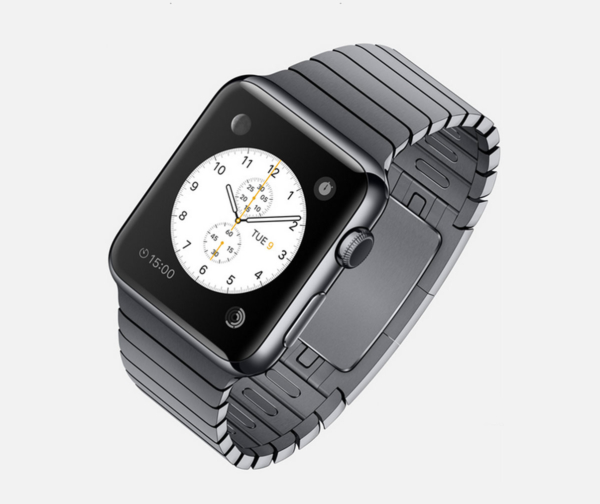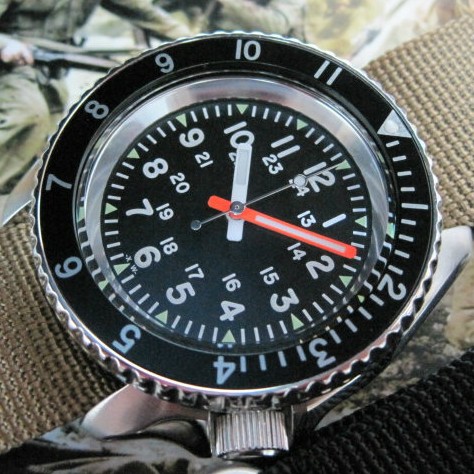It happens to all of us at some point: the honeymoon is over. You wake up one morning and realize that the watch just doesn’t “click” with you any more. It’s time to move on. Which means you have to sell this watch. For first timers, selling a watch on-line can seem daunting. There are a lot of places to sell and things to consider to get the best price you can and actually move the watch. The difficult reality is, unless you are selling a vintage watch, rare model or popular brand, you probably will not recoup everything you put into the watch, so getting the best amount you can is important. And we want to help. We will be presenting the main points to consider to get your sales post the attention it deserves and the buyer you need. To that end we have four areas to offer our tips and tricks for a quick sale:
- What’s it Worth: Condition & Value
- A Photo is Worth a Thousand Words: Photographing Your Watch
- Putting Your Watch into Words: Drafting Your Sales Post
- Where the Buyers Are: Watch Selling Sources
Part I: Condition & Value
 The first thing to consider when selling your watch is assessing the condition of your timepiece. Condition is key for determining how much you should ask for a selling price. Review your watch and make note of any scratches, scrapes or dings in the case. We expect some light scratches from normal daily wear, these are unavoidable, and we hope not to see any deep scrapes or dings, but if they are there, take note. Also check the back of the watch for any marks on the lugs from strap changes; although not visible when wearing, people will want to know if they are there. How is the crystal? Clean? Scratched? Again, make note of any defects. Aside from the watch also examine the bracelet and/or strap. How worn is the strap? Is it stained at all? Does the bracelet have scratches or gouges? How marked is the clasp? Again, there will be scratches from regular wear; the bracelet clasp is especially prone to this for those of us with a desk job. Once you have all of the defects noted, don’t get discouraged. After closer examination you may think your watch looks like crud but it is more likely just normal. Unless you bought the watch and put it in a safe, it is going to have marks. Also important is to track down the accessories: boxes, papers, extra links, etc. Note what you have and what might be missing.
The first thing to consider when selling your watch is assessing the condition of your timepiece. Condition is key for determining how much you should ask for a selling price. Review your watch and make note of any scratches, scrapes or dings in the case. We expect some light scratches from normal daily wear, these are unavoidable, and we hope not to see any deep scrapes or dings, but if they are there, take note. Also check the back of the watch for any marks on the lugs from strap changes; although not visible when wearing, people will want to know if they are there. How is the crystal? Clean? Scratched? Again, make note of any defects. Aside from the watch also examine the bracelet and/or strap. How worn is the strap? Is it stained at all? Does the bracelet have scratches or gouges? How marked is the clasp? Again, there will be scratches from regular wear; the bracelet clasp is especially prone to this for those of us with a desk job. Once you have all of the defects noted, don’t get discouraged. After closer examination you may think your watch looks like crud but it is more likely just normal. Unless you bought the watch and put it in a safe, it is going to have marks. Also important is to track down the accessories: boxes, papers, extra links, etc. Note what you have and what might be missing.
To assign a condition we need to have some sort of scale to assist in judging the overall shape of the watch. The TimeZone Grading System has become somewhat of a standard on watch sales forums and is a good place to start. Review the guide and see where your watch fits. They do use a percentage rating which I feel is a bit subjective; use the descriptors (Very Good, for example) along with your own detailed text. We will get into that a bit more later. By using this guide you will have a good representation of the condition of your watch in terms that most buyers will understand.
 The next area to consider is what do you want for it? How much money are you hoping to get? Naturally we all want to get what we can out of the watch, hopefully as close to our expenditure as possible, but that is not always realistic. Keep in mind that like a car, as soon as it leaves the lot (is strapped to your wrist) it begins to depreciate in value. (There are exceptions to this rule, of course.) To find out what you should ask it is best to do a little homework first by seeing what the same or similar models have sold for in the recent past. Fire up your browser and hit a few of the watch sales forums and use that search box. Look for your model of watch or similar and see what has sold in the past few months and for how much. Another source is actually eBay as well; via the advanced search function you can look for complete auctions and again find the price for recently sold pieces. Look carefully at the condition of these sold watches in comparison to your own. Yours better? Or worse? Did they have the extra links and box? All of these areas will help you identify a starting price and get you on your way to getting your watch sold.
The next area to consider is what do you want for it? How much money are you hoping to get? Naturally we all want to get what we can out of the watch, hopefully as close to our expenditure as possible, but that is not always realistic. Keep in mind that like a car, as soon as it leaves the lot (is strapped to your wrist) it begins to depreciate in value. (There are exceptions to this rule, of course.) To find out what you should ask it is best to do a little homework first by seeing what the same or similar models have sold for in the recent past. Fire up your browser and hit a few of the watch sales forums and use that search box. Look for your model of watch or similar and see what has sold in the past few months and for how much. Another source is actually eBay as well; via the advanced search function you can look for complete auctions and again find the price for recently sold pieces. Look carefully at the condition of these sold watches in comparison to your own. Yours better? Or worse? Did they have the extra links and box? All of these areas will help you identify a starting price and get you on your way to getting your watch sold.
In the next part we will look at some watch photo basics so you can capture the true condition of your watch. Remember that a photo is worth a thousand words, or in this case, maybe a thousand dollars.









 Featured Videos
Featured Videos







